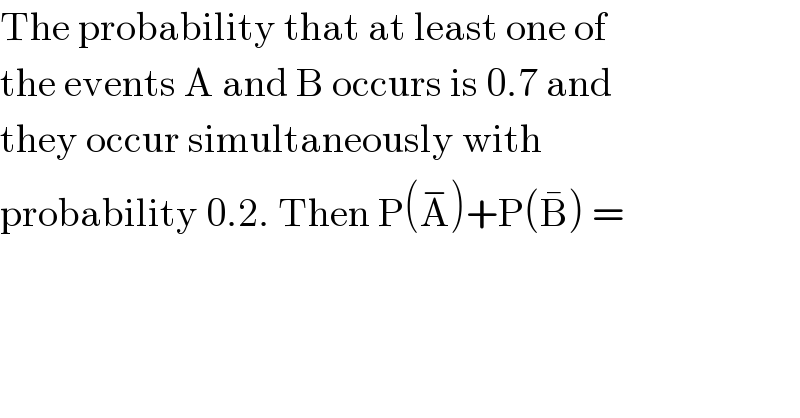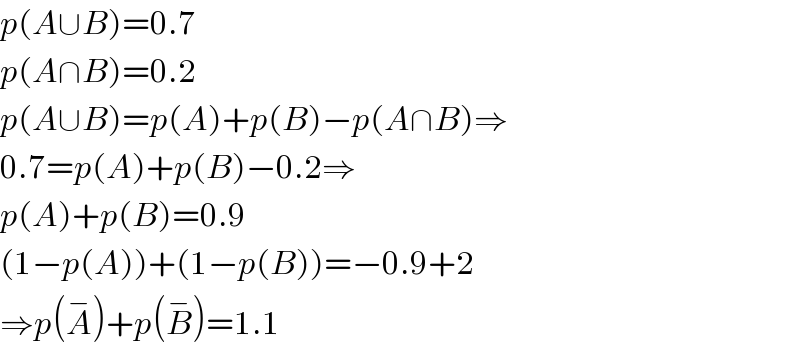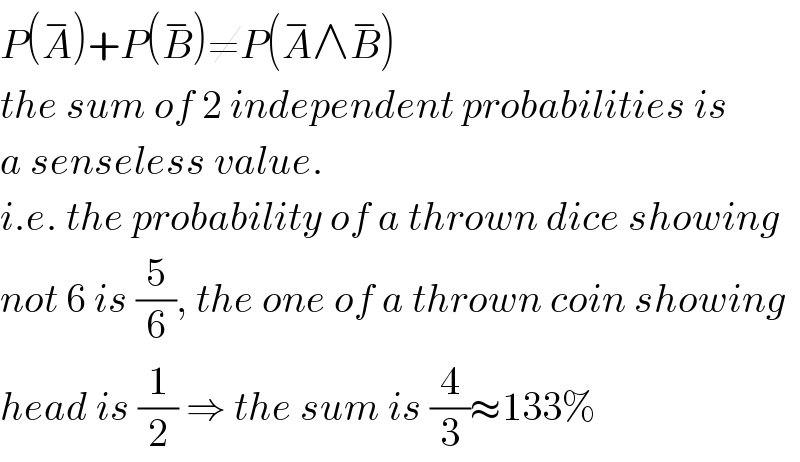
Question and Answers Forum
Previous in Probability and Statistics Next in Probability and Statistics
Question Number 110826 by Aina Samuel Temidayo last updated on 30/Aug/20

Commented by kaivan.ahmadi last updated on 30/Aug/20

Commented by Aina Samuel Temidayo last updated on 30/Aug/20

Commented by Aina Samuel Temidayo last updated on 31/Aug/20

Commented by Aina Samuel Temidayo last updated on 31/Aug/20

Commented by kaivan.ahmadi last updated on 31/Aug/20

Commented by Her_Majesty last updated on 31/Aug/20

